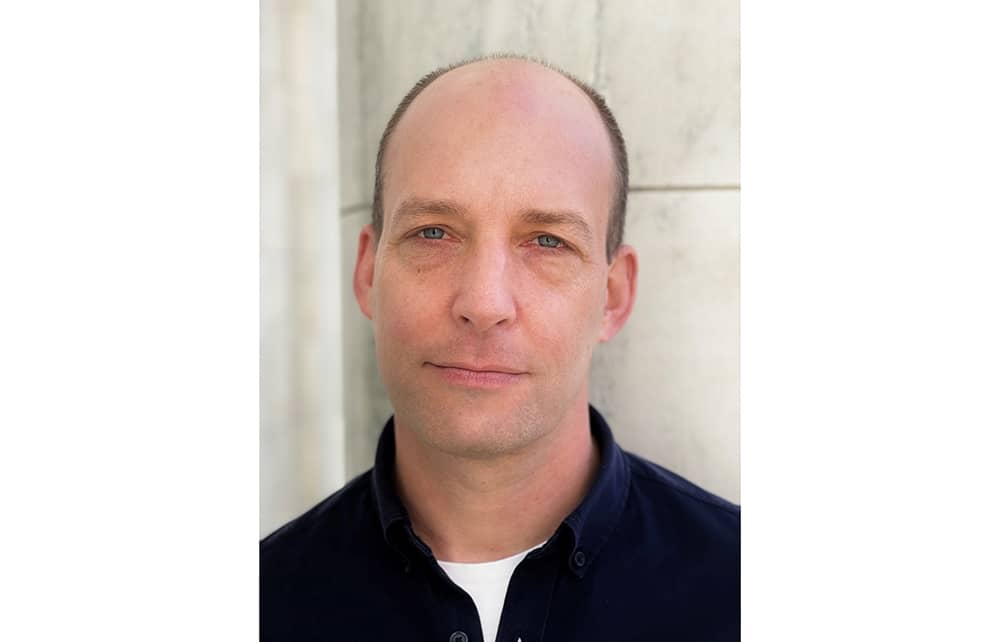Mark Vanhoenacker dreams of my nightmares. Ever since he was a young boy, he fantasized about piloting airplanes. Ever since I was a young boy, well, let’s just say I’ve preferred to take the train.
Of course I know that, statistically, flying is safe; but that knowledge doesn’t stop the unnerving sense that at some point the laws of physics will reimpose themselves and we’ll be punished for our former miracles. And let’s be honest, if God had wanted us to fly, would he really have invented airline food?
Vanhoenacker has no such worries — which is handy, since he’s fulfilled his dream and now pilots Boeing 787 Dreamliners round the world (a life he detailed in his surprise 2015 bestseller Skyfaring). For him, flight was always a form of refuge. Growing up in smalltown America with a speech impediment and a “dawning awareness I’m gay,” he would sketch imaginary metropolises in his bedroom and dream of flying planes to faraway places “where speech and life will be effortless.” His latest memoir charts that journey, from Seoul to San Francisco, Delhi to Rome, weaving in civic and poetic histories along the way. It’s not all glamour, though: even a Dreamliner pilot visits the nondescript English town of Milton Keynes.
Like many books ostensibly about travel, Imagine a City is really about home. Vanhoenacker’s story is a variation on the Great Expectations narrative, with our young hero feeling uncomfortable where he grows up, flying the nest for a series of transformative experiences but discovering he can never quite leave home nor fully return.
The most moving parts of the book are when the author grapples with this tension and meditates on the pull of his loving parents and distant hometown, whose memory provides a solidity at the heart of his nomadic life. As a pilot, landing in cities on fleeting but repeat visits, Vanhoenacker lives in-between, neither resident nor tourist: a man less than local but far from lost.
It is this vantage which ought to give the book its special window on the world. Yet at times it reads less like an insightful memoir than an uncritical transcription of a tourist board’s website. We learn that Pittsfield “held the first American agricultural fair, in 1811,” while Hong Kong has 482 buildings over 150 meters tall, and Jeddah is “Saudi Arabia’s second largest city… the country’s commercial center, and is said to exhibit an outgoing coastal cosmopolitanism that contrasts with Riyadh” (presumably so long as you’re not a woman or gay, or, God forbid, both).
This is a shame because the author does have an eye for evocative stories. In the early days of Oklahoma City, for example, an astute governor erected “miles-to-go signs far out on the roads, hoping to conjure the new city’s majesty from the anticipation he scaffolded across the land.” It’s just that Vanhoenacker shares the luminous and the banal alike. Do we really need to know that he might spend his downtime in a foreign city exercising “while I listen to music or catchup on a podcast,” or that he runs more than he swims because “it’s easier to find places to do so?”
Such banalities aren’t isolated: they are part of the structure of the book, which, in a way, mimics the rhythmless experience of flight. For flying is a special mode of travel. All other forms of motion have some synchronicity with the body, some felt sense of time and distance passing, whether from our own exertions, as we walk roughly in step with our heartbeats, or from the undulating rhythm of the track, road or waves beneath us. But commercial flight is a flat, airless experience, with no overt rhythm to plug ourselves in to. This is what makes it so disorientating, with our bodies out of touch with their transport, detuned from time.
Imagine a City taps into this sense of disorientation, with things happening laboriously, then all at once, as we zip from Rome to Pittsfield in a paragraph but also have to wait around to hear how Vanhoenacker “washes [his] coffee cup and rests it at an incline to dry on the side of the sink” (with such lines usually heralding a sharp-left turn into reminiscence or a history lesson — a pattern which, once noticed, turns reading into a game of Vanhoenacker-bingo which you don’t want to win).
What the author really needs is a co-pilot, someone who can guide him away from the dry plotting and tiny details that cloud his vision and weigh down his prose. Sadly, his editors seem to have missed their boarding call, and as a result this pilot’s memoir struggles to ever take off.
This article was originally published in The Spectator’s UK magazine. Subscribe to the World edition here.


















